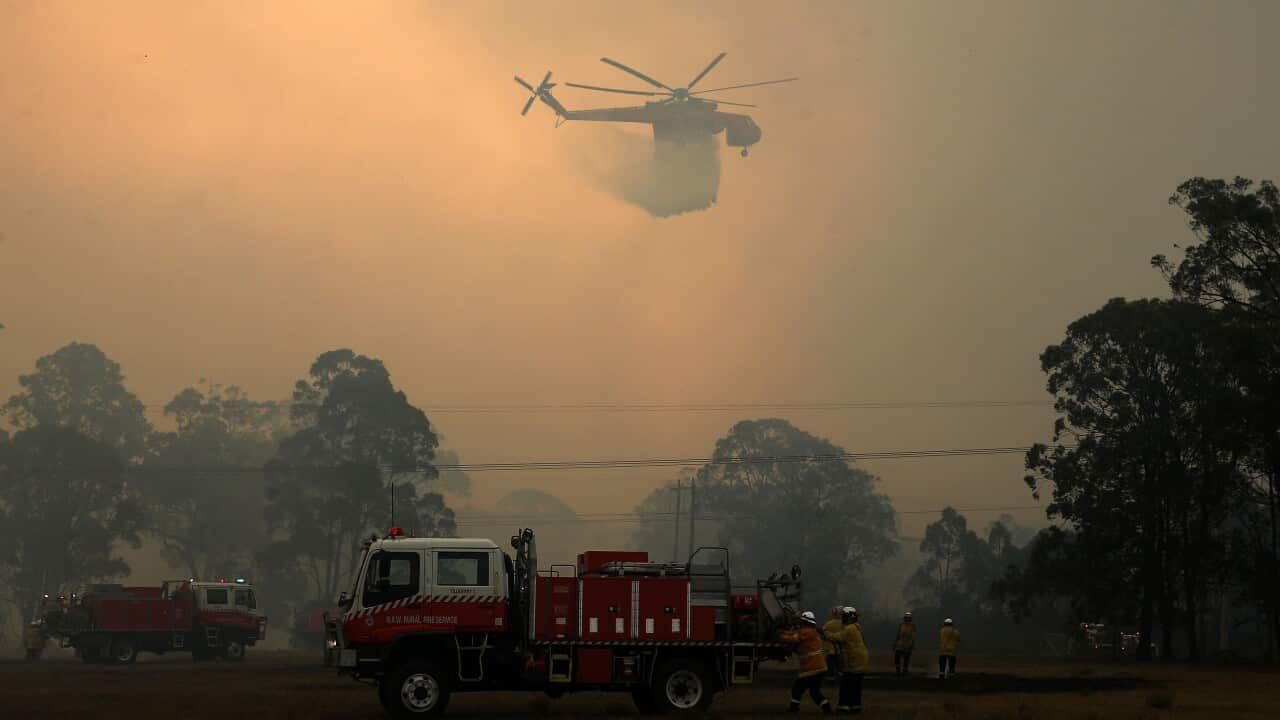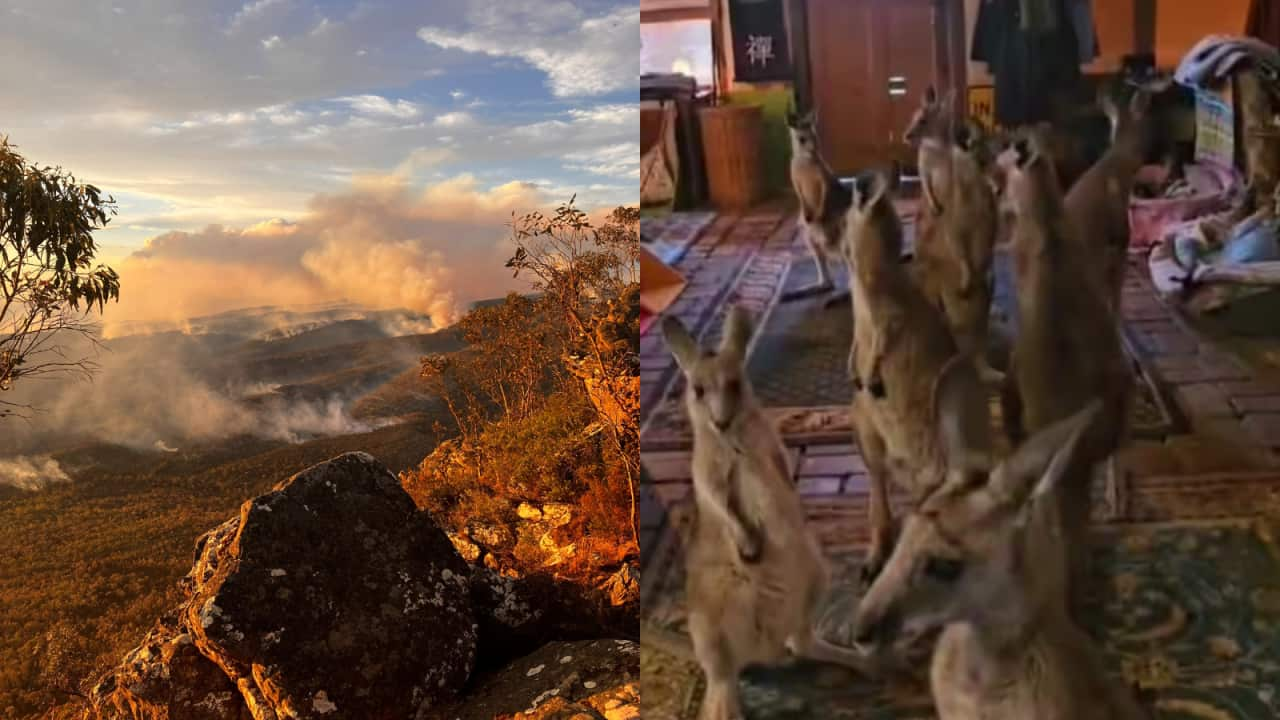Major wildfires are devastating parts of Los Angeles, killing at least five people, destroying thousands of homes and businesses, and ordering the evacuation of over 100,000 residents.
, power outages, closures of schools, and cancellation of film premieres and other significant events.
"This is a tragic time in our history," Los Angeles County Police Department sheriff Jim McDonnell said on Wednesday morning local time.
"These are … unprecedented conditions, but also unpredictable as the fire continues to spread and pop up in different locations. None of us know where the next one is going to be."
Where are the LA fires and how large are they?
Four of the wildfires burning across Los Angeles County are entirely uncontained.
The most significant blaze is the Palisades fire, which was first reported around 10am local time on Tuesday (5am AEDT Wednesday).
It grew within 20 minutes from a fire of eight hectares to more than 80 — and by late on Wednesday, had burned almost 6,500 hectares in the hills between Santa Monica and Malibu.
Authorities declared it the most destructive fire in the city's history.

Authorities have declared the Pacific Palisades fire the most destructive fire in the city's history. Credit: NASA Earth Observatory
Within the first six hours, it grew to over 400 hectares, reaching more than 4,200 hectares by late Wednesday.
The Hurst fire in Sylmar in the San Fernando Valley began burning around 10pm local time on Tuesday, exceeding 340 hectares in less than 24 hours.
On Wednesday evening local time, a new brush fire broke out in the Hollywood Hills near Runyon Canyon.
The blaze, named the Sunset fire, has prompted the evacuation of some of the most famous parts of LA, including the Hollywood Walk of Fame.
The Lidia fire in Acton, north-east of Santa Clarita, was 40 per cent contained by Wednesday evening, The Angeles National Forest said, meaning part of the blaze has been stopped from spreading.
The Woodley fire, which broke out near the Sepulveda Basin around 6am local time on Wednesday, was fully contained by the evening.

This map shows where the wildfires are currently burning across Los Angeles County. Credit: California Department of Forestry and Fire Protection
What caused the LA wildfires and how did they spread so quickly?
It's not yet known exactly what started the fires.
Earlier this week, the United States National Weather Service issued its highest alert for extreme fire conditions for much of Los Angeles County from Tuesday through Thursday.
With low humidity and dry vegetation due to a lack of rain, the conditions were "about as bad as it gets in terms of fire weather," it said.
Beyond the chaparral and eucalyptus trees, LA's densely populated urban landscape also includes flammable material with hanging power cables, wooden telephone poles and homes built with wood in accordance with earthquake codes.
The addition of powerful Santa Ana winds, which brought dry desert air from the east towards the coastal mountains, have fanned the wildfires while blowing over the hilltops and down through the canyons.

Tens of thousands of people have been ordered to evacuate, with many losing their homes. Source: AAP / Ethan Swope/AP
How are there wildfires in winter?
While we generally don't expect major blazes to break out during the colder months in Australia, scientists now consider fire to be a yearlong risk in California.
The state's average temperature has warmed by roughly 1C since 1980.
European Forest Institute fire management expert Lindon Pronto said: "The obvious impact of climate change in this situation is that the average number of days per year where the vegetation is very available for fire has doubled since the 1980s."
"Eventually, you have a compounding effect where you see much more extreme fire behaviour at different times of the year that you wouldn't have," Pronto said.
Despite California's fire season growing "longer and longer", he said it was "somewhat surprising" for there to be "such a devastating event" at this time of year.
"Such destruction on this scale is not often seen in the month of January," he said.
Why are firefighters struggling to contain the LA fires?
The weather conditions and extra fuel, combined with issues with water supplies, have caused difficulty in containing the fires.
The Los Angeles Department of Water and Power said in advance of the windstorm, it had filled all available water tanks in the city, including three 3.8-million-litre tanks in the Palisades area.
These three tanks had already been exhausted by early Wednesday time, department chief Janisse Quinones said, as she urged residents across LA to conserve water.
"We're fighting a wildfire with urban water systems, and that is really challenging," she said, noting that Pacific Palisades experienced four times the normal water demand for 15 hours as firefighters battled the blaze.

The fast-spreading flames of the Palisades fire reached the Pacific Ocean. Source: Getty / Wally Skalij/Los Angeles Times
"It's not a matter of there's not enough water in Southern California; it's a matter of there's not enough water in that particular area of Southern California just for those few hours that you need it to fight the fires," he said.
Lund said the nature of the fires was such that it was nearly impossible to arrange enough water in advance.
"If everything catches fire at once, there's not going to be enough water for everybody," he said.
"There's just no way that you could fit the pipes to work to move that much water across that area in a short period of time."
The magnitude of the Palisades and Hurst blazes, in particular, were "stretching the capacity of emergency services to their maximum limits", Los Angeles City fire chief Kristin Crowley said.
Crews were being brought in from around the US to assist the firefighting efforts.
Australian Prime Minister Anthony Albanese said he'd reached out to US President Joe Biden to express support during such a "difficult time".
"We are always available to help our American friends," he said.
Which celebrities have been affected by the LA fires?
The biggest of the blazes has devastated large parts of the affluent and picturesque Pacific Palisades neighbourhood, which is home to many celebrities.
Actors Leighton Meester and Adam Brody, Billy Crystal, Eugene Levy, Miles Teller, John Goodman, Anna Faris, and Anthony Hopkins are among the Hollywood stars reported to have lost their homes.
Paris Hilton said she found out through the news that her beachfront house in Malibu had burned down.
Dozens of other famous names are among the thousands of residents forced to evacuate.
— With additional reporting by Reuters.




